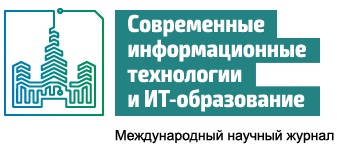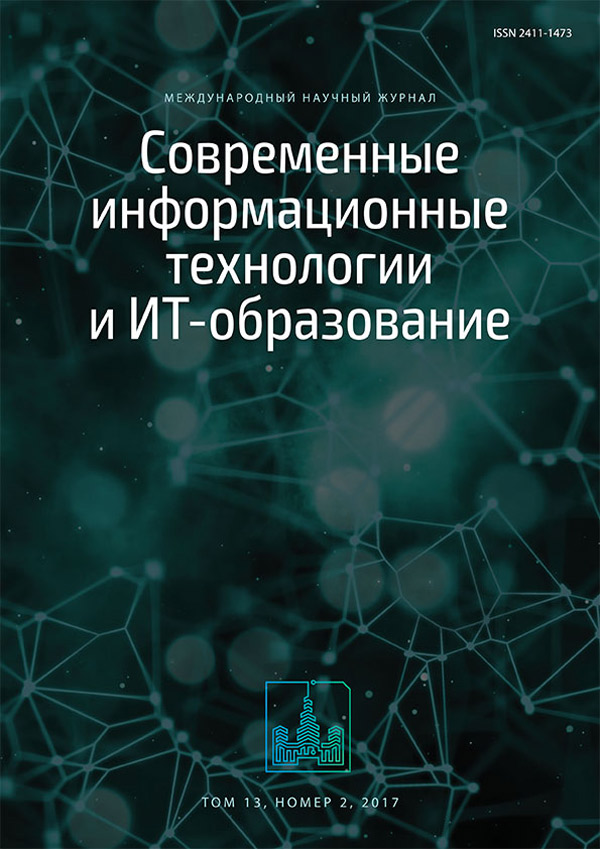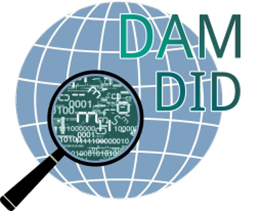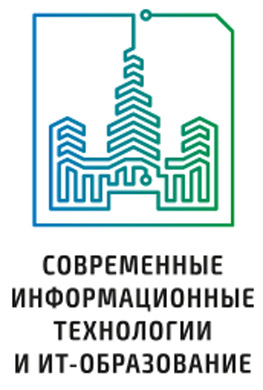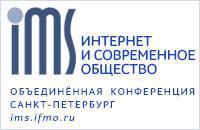МЕТОДОЛОГИИ И ИНДИКАТОРЫ ДЛЯ ИЗМЕРЕНИЯ БОЛЬШИХ ДАННЫХ
Аннотация
Развитие технологий социальных сетей, облачные вычисления и «Интернет вещей» вызвали быстрое увеличение объема данных и формирование парадигмы «больших данных». Увеличение объема, скорости, разнообразия и ценности больших данных стало играть важную роль в создании социальных отношений, конкурентных преимуществ и инновационных направлений. Внедрение в различные сферы человеческой жизнедеятельности вызвало потребности в проведении количественных и качественных оценок больших данных. В этой статье рассмотрены некоторые подходы к определению больших данных. Исследованы методологические подходы и индикаторы для измерения больших данных. В конце были предложены индикаторы для измерения факторов, влияющих на рост и развития больших данных.
Литература
2. Big Data, Big Impact: New Possibilities for International Development // URL: http://www.weforum.org/reports
3. Jina X., Benjamin W., Chenga X., Wang Y. Significance and Challenges of Big Data Research // J.Big Data Research — 2015. — Vol.. 2(2) —, pp. 59–64.
4. Oxford Dictionaries // URL: www.oxforddictionaries.com/definition//big-data, 2015.
5. Hu H., Wen Y. et al. Toward Scalable Systems for Big Data Analytics // IEEE Access Journal — 2014. —Vol. 2, — PP. 652-689.
6. Gartner. IT Glossary Big Data // URL: http://www.gartner.com/it-glossary/big-data/
7. Boyd D., Crawford K. Critical Questions for Big Data. Information // Communication & Society —2012.. — vol.15(5) — PP. 662-679.
8. Gantz J., Reinsel D. Extracting value from chaos // Proc. IDC iView— 2011.— PP. 1–12.
9. J. Manyika, Michael Chui,Brad Brown et al., Big data: The Next Frontier for Innovation Competition and Productivity // San Francisco, CA, USA: McKinsey Global Institute — 2011. — PP. 1-137.
10. M. Cooper, P. Mell Tackling Big Data // URL: http://csrc.nist.gov/groups/SMA/forum/documents/
11. UN Global Pulse «Big Data for Development: Challenges & Opportunities», 2012 // URL:http://unglobalpulse.org
12. UN Global Pulse «Integrating Big Data into the Monitoring and Evaluation of Development Programmes», 2016 // URL: http://unglobalpulse.org//
13. Pospiech M., Felden C. Towards A Big Data Theory Model //Proceedings 2015, IEEE International conference on Big Data — 2015. — PP. 2082-2090.
14. Lyman P., Varian Hal R. How Much Information, 2003 // URL: http://groups.ischool.berkeley.edu/archive/how-much-info-2003/
15. Gantz J. et. al. The Diverse and Exploding Digital Universe: An Updated Forecast of Worldwide Information Growth Through 2011 // IDC White Paper —March 2008.
16. Westervelt R. IDC White Paper: Information-Centric Security: Why Data Protection Is the Cornerstone of Modern Enterprise Security Programs, March 2017 // URL:symantec.com›content/dam/
17. Hilbert, M., López, P. The World’s Technological Capacity to Store, Communicate, and Compute // Information. Science — 2011. —Vol.332(6025) — PP.60 –65.
18. Cisco Visual Networking Index: Forecast and Methodology, 2016–2021 // URL: http://www.cisco.com
19. Bohn, R., Short, J. How much information? 2009 report on American consumers, Global Information Industry Center of University of California // URL: http://hmi.ucsd.edu/howmuchinfo.php
20. Massachusetts Big Data Indicators 2015 // URL: http://massbigdata.org/assets/Uploads/Final-Big-Data-Report-2015.pdf
21. Catteneo G. «The European Data Market» // NESSI summit in Brussels on 27 May 2014. — URL: http://www.nessi-europe.eu/
22. Final results of the European Data Market study measuring the size and trends of the EU data economy, 2017// URL: https://ec.europa.eu/digital-single-market/en/news/
23. Halevi G., The Evolution of Big Data as a Research and Scientific Topic Overview of the Literature // Research Trends — 2012. —Issue 30.
24. Hajirahimova M., Aliyeva A. Some indicators of Big Data // IOSR Journal of Engineering (IOSRJEN) —2016. —Vol. 06, —Issue 10, —PP. 01-06
25. Aliguliyev R.M. , Hajirahimova M.Sh., Aliyeva A.S. Current scientific and theoretical problems of Big Data // Problems of information society — 2016. — №2, — PP.34–45.
26. Cai L., Zhu Y. The Challenges of Data Quality and Data Quality Assessment in the Big Data Era // Data Science Journal — 2015 . —Vol.14, . — PP.2-8.
27. Hilbert M. How to Measure “How Much Information”? Theoretical, Methodological, and Statistical Challenges for the Social Sciences // International Journal of Communication— 2012 . — Vol.6, — PP. 1042–1055.
28. Korytnikova, N.V. Online big data as a source of analytic information in online research // Sotsiologicheskie Issledovaniya— 2015. — № 8, — PP 14-24
29. Big Data for Measuring the Information Society, 2003 // URL: http://www.itu.int/net4/ITU-D/CDS/projects/display.asp?ProjectNo=2GLO16081
30. Internet of Things to generate 400 zettabytes of data by 2018 // URL: v3.co.uk
31. The Zettabyte Era: Trends and Analysis, 2017 //URL: www.cisco.com
32. Inside Ten of the World’s Largest Data Centers // URL: http://wikibon.org/blog/inside-ten-of-the-worlds-largest-data-centers/

Это произведение доступно по лицензии Creative Commons «Attribution» («Атрибуция») 4.0 Всемирная.
Редакционная политика журнала основывается на традиционных этических принципах российской научной периодики и строится с учетом этических норм работы редакторов и издателей, закрепленных в Кодексе поведения и руководящих принципах наилучшей практики для редактора журнала (Code of Conduct and Best Practice Guidelines for Journal Editors) и Кодексе поведения для издателя журнала (Code of Conduct for Journal Publishers), разработанных Комитетом по публикационной этике - Committee on Publication Ethics (COPE). В процессе издательской деятельности редколлегия журнала руководствуется международными правилами охраны авторского права, нормами действующего законодательства РФ, международными издательскими стандартами и обязательной ссылке на первоисточник.
Журнал позволяет авторам сохранять авторское право без ограничений. Журнал позволяет авторам сохранить права на публикацию без ограничений.
Издательская политика в области авторского права и архивирования определяются «зеленым цветом» в базе данных SHERPA/RoMEO.
Все статьи распространяются на условиях лицензии Creative Commons «Attribution» («Атрибуция») 4.0 Всемирная, которая позволяет другим использовать, распространять, дополнять эту работу с обязательной ссылкой на оригинальную работу и публикацию в этом журналe.
